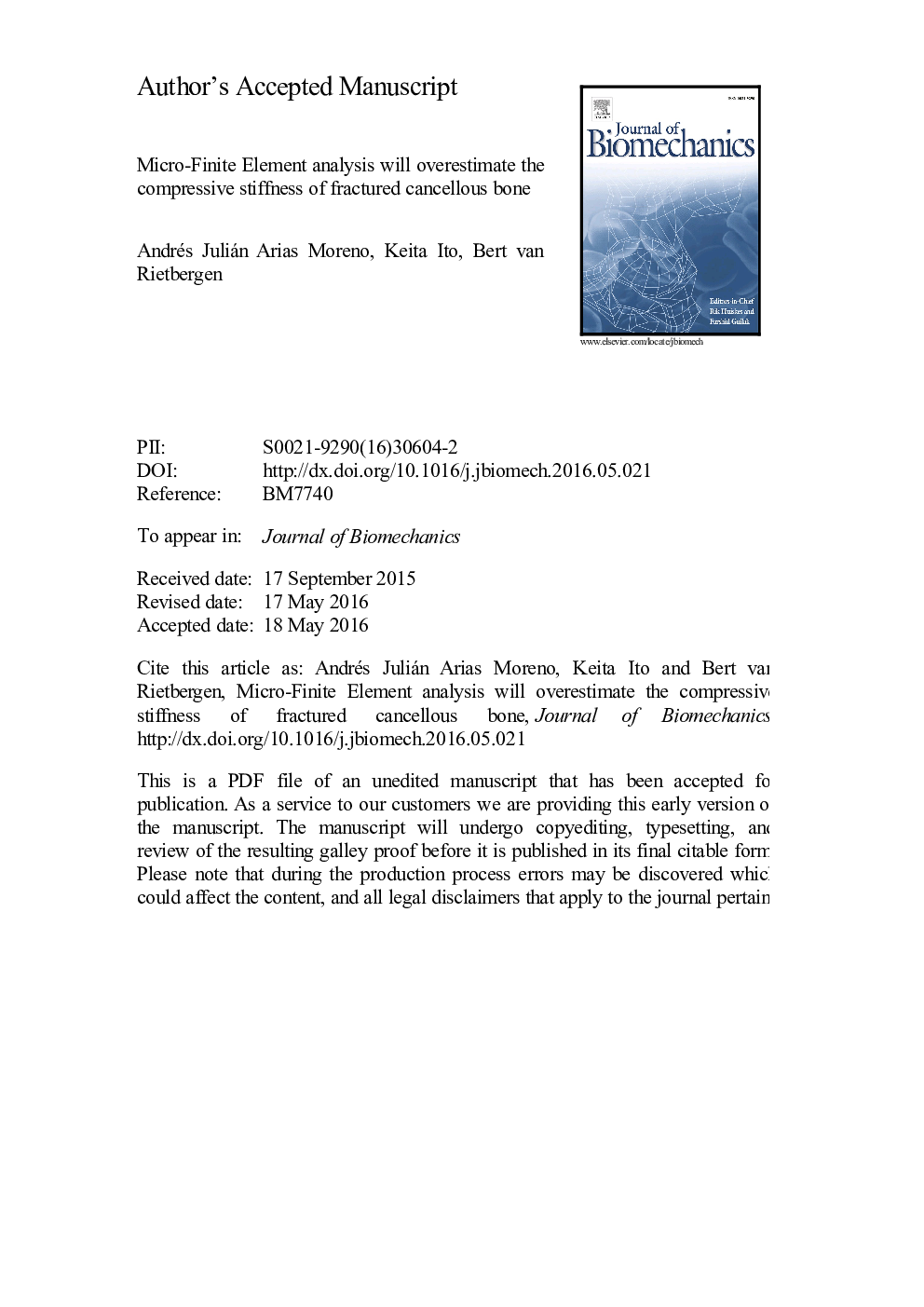| Article ID | Journal | Published Year | Pages | File Type |
|---|---|---|---|---|
| 5032431 | Journal of Biomechanics | 2016 | 28 Pages |
Abstract
Recently, micro-Finite Element (micro-FE) analysis based on High Resolution peripheral Quantitative CT (HRpQCT) images was introduced to quantify the state of fracture healing (de Jong et al., 2014). That study suggested that the direct post-fracture stiffness may be overestimated by micro-FE. The aim of this study was to investigate this further by measuring the loss in stiffness of cancellous bone samples under compressive loading and to compare this with predictions based on micro-FE analyses and bone microstructural and fracture morphology. Sixty porcine trabecular cores were micro-CT scanned and tested in compression before and after inducing a fracture in 4 different manners. The loss in stiffness as measured in the experiment was compared to that calculated from micro-FE analysis. Additionally, bone morphology parameters and fracture thickness were calculated. The experimentally measured loss in stiffness ranged from 37% to 80%. The losses calculated from the micro-FE analyses were lower and ranged from 36% to 61%, while in one case an increase in stiffness was calculated. For 2 of the 4 experiments, the results of the experiment and micro-FE analyses were significantly different. Only for very smooth fractures good agreement was obtained between FE and experimental results. The loss in stiffness did not correlate with any investigated bone morphology parameter or the thickness of the fracture region. It was concluded that micro-FE analysis can severely overestimate the stiffness of fractured bone depending on the type of fracture, but in the case of smooth fractures good estimates are possible.
Related Topics
Physical Sciences and Engineering
Engineering
Biomedical Engineering
Authors
Andrés Julián Arias-Moreno, Keita Ito, Bert van Rietbergen,
